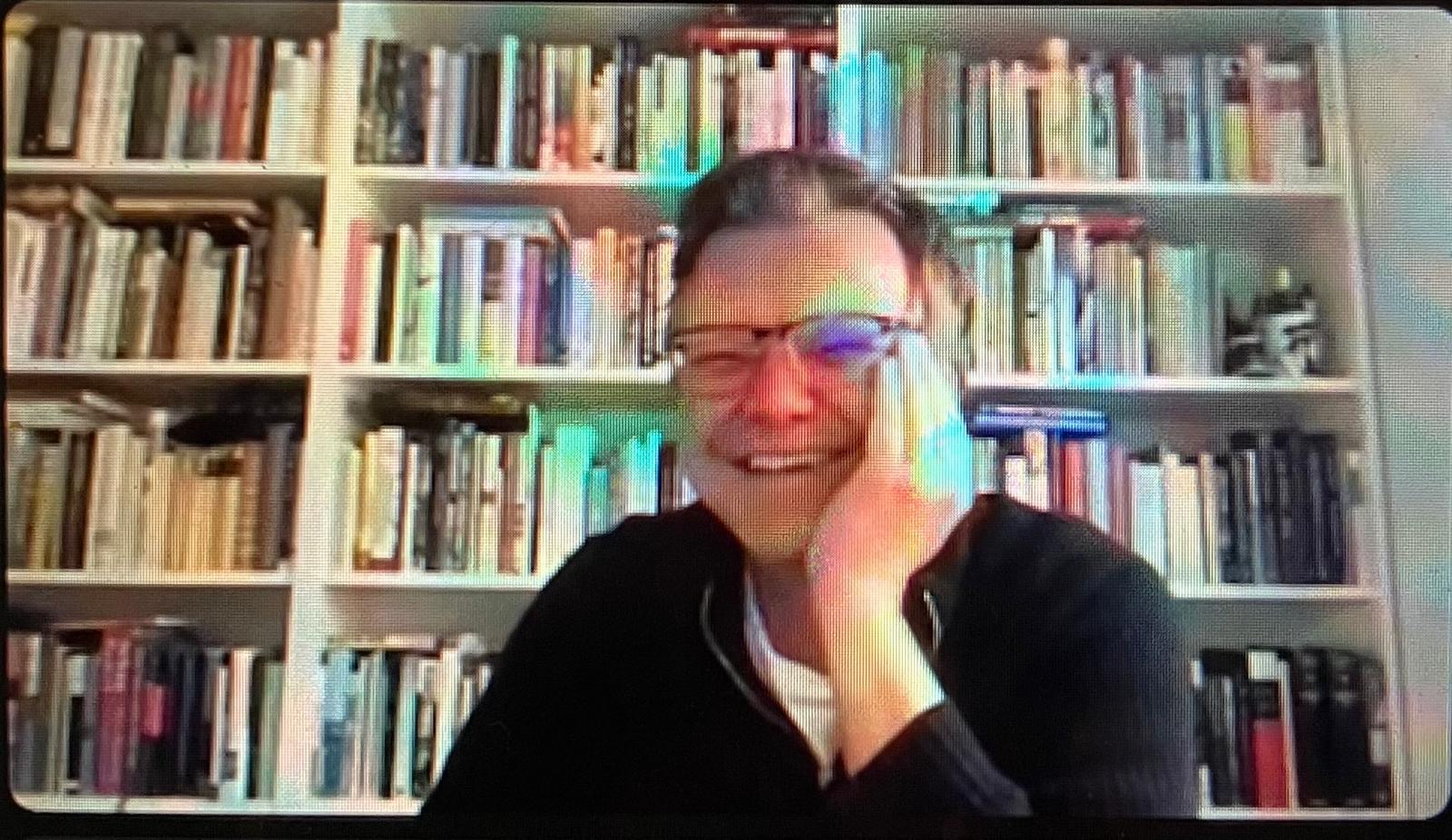Our April 2023 Issue Features:
Jianqing Chen
This article studies the popular bullet-titling practice in contemporary China – typing and sending a layer of horizontally scrolling comments superimposed onto moving images. It first explicates bullet-titling practice as a retaliatory action against the tactile effects of moving images, reconceptualizing cinema’s tactile quality and recovering its association with bullet-like intensity through the notion of tacti(ca)lity. Tracing the changed perception of touch in relation to the emergence of the touchscreen interface, the author then delineates the transformation of bullet-titles from offensive weapons against the optical attacks of moving images to a venue for real-time conversation and communication among spectator-cum-bullet-titlers. The article ends with a discussion of bullet-titles’ construction of pseudo-real time, which constitutes a viewing community of ‘diachronic simultaneity’ that assimilates all temporally and geographically dispersed spectators into the unfolding ‘now’ of video playback. This ‘nowness’ reconciles contemporary media consumption’s contradictory demands for globalized simultaneity and individualized flexibility, obliterating us anew.
Black Vibrations: Techno as Queer Insurrectionist Sonics
David Riley, DeForrest Brown, Jr., Madison Moore, and Alexander Ghedi Weheliye
This conversation is excerpted from a panel which followed Black Vibrations, a performance by DeForrest Brown Jr. and madison moore at the Institute for Contemporary Art at VCU (ICA at VCU, Richmond, Virginia) on 25 March 2022. Black Vibrations was the first of the ICA’s Test Pattern series, inspired by the legacy of visionary public-access TV programs and alternative video movements in the US. The series invites artists to turn the ICA auditorium into an experimental production studio for week-long residencies, during which they collaborate with members of the local community to create a live performance and internet broadcast. Black Vibrations considered the history of Detroit techno, and the potential of ‘vibrational technologies’ as an instrument and a weapon. madison moore presented a DJ set as a performative lecture, while Deforrest Brown Jr. performed live using tablets and other haptic technology, building upon his work as a cultural theorist and his musical output under the moniker Speaker Music.
Strategic visibility: architectures of data colonialism in Las Vegas
Isadora Bratton-Benfield
This article articulates the continuity between past and present infrastructural development in Las Vegas by focusing upon the materiality and visual cultural expression of the Google Henderson NV data center. The political implications and interstate dynamics at play in the development of this data center are historicized, focusing on large-scale tech and military projects that characterize the region’s development. Google’s promise that a data-driven future would be accompanied by social and economic benefits for the Las Vegas community lies in stark contrast to the reality of its data center’s function. The strategic adoption of Google’s vision by key local and state officials, alongside the data center’s material embodiment as visually abstract and camouflaged, allows the facility to avoid scrutiny and teaches us about the evolving position of labor in a post-Fordist economy, particularly with regard to housing and employment.
Counter-archives as heritage justice: photography, invisible labor and peopled ruins
Mirjam Brusius and Trinidad Rico
This article critically engages with photographs, the institutions that archive and curate them, and the uses to which they are put in the work of heritage preservation, with particular attention paid to the ways in which these have been mobilized in Middle Eastern heritage debates. Photographs, often depicting uninhabited rather than populated heritage landscapes, in effect weaponize heritage preservation, ignoring the fact that individuals and communities have always had their own ways of preserving and engaging with the material past. The authors therefore seek to reconsider the disciplinary genealogies embedded in a photographic archive shaped by instruments of Western ideology and power – archaeological fieldwork, surveys and museum-building – to question the uncritical use of photography for the assessment of heritage significance, the construction of heritage value and management of heritage assemblages today. They argue that identifying and creating counter-archives is necessary to contribute to more inclusive narratives fostering heritage justice, including a deeper engagement with archaeology’s long-standing entanglements with exploitative labour.
Inverting resolution: accounting for the planetary cost of earth observation
Stephen Cornford
This article uses the resolutional relationship between digital image and planetary surface in satellite remote sensing as a lens through which to view the reliance of visual culture on mineral resources. While most studies of resolution in satellite imaging have focused on visibility and invisibility, the author argues that the equivalence between pictorial and geographic space in its cm/pixel specification offers an opportunity to consider the physical relationship between the two. The proposed inversion enables the satellite and its transmitted images to be understood as contingent upon an unsustainably extractive industrial model. The article then traces the material trajectory in geophysical prospecting applications of remote sensing, identifying a recursive loop in which images are used to produce minerals that are used to produce images. The potential geopolitical impact of this circularity is then assessed with regard to an example of future remote sensing emissions governance.
—
Book Reviews:
Maria Stavrinaki, Transfixed by Prehistory: An Inquiry into Modern Art and Time, by Kyle Sossamon
Laura Kurgan, Close Up at a Distance: Mapping, Technology, and Politics, by Henry Powell
Christine Checinska, Africa Fashion Exhibition, by Alice Tremea
—





